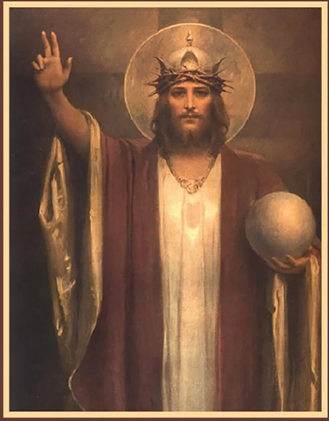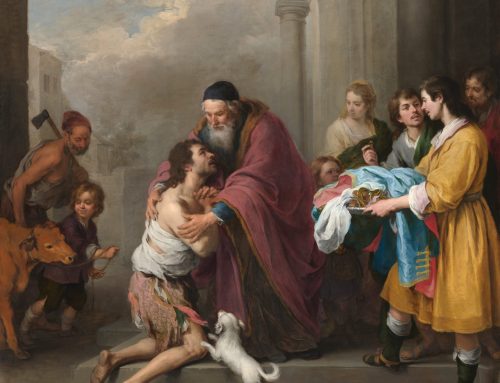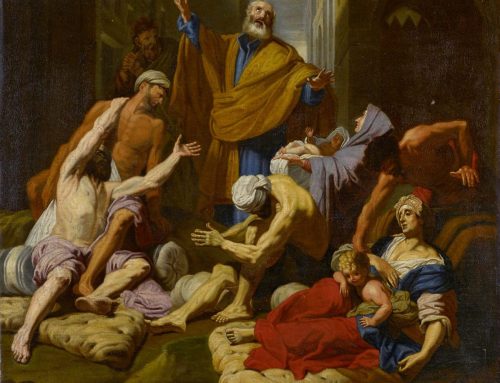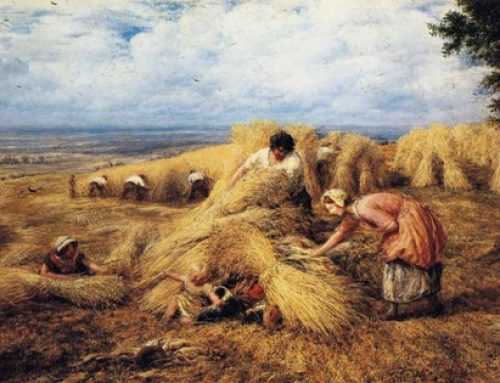
Christ the King, C.B. Chambers, circa 1930.
With the Synod for Synodality[1] meeting in Rome in a few short weeks, the confusion in the Catholic Church is on full display. Many are anxious about what will come from these meetings. Some launch vitriolic attacks on the Pope, claiming him to be a heretic and that we can’t follow him. Others say the Pope can teach no error and we have to follow him no matter what or we’re not Catholic. Still others may not know what to think about this topic. Can the Catholic Faith change with the times? Do you really have to believe everything the Pope, bishops and priests teach? And how are we to know precisely what is the Faith?
St. Vincent of Lerin (early 5th century) formulated a simple summary whereby we may know what is the true Catholic Faith. His “Vincentian Canon” articulates the fundamental rule by which the Catholic Faith can be distinguish from heresy. The true and Catholic Faith is that which has been believed everywhere, always, and by all the faithful. In other words, the Faith is handed down from age to age. There is nothing novel or new. Doctrines can be defined and more clearly understood, yes, but nothing is to be innovated or created anew. As Catholic philosopher Dr. Peter Kreeft puts it, “The Church does not write the mail; she simply delivers it.”
There has always been heresy, from the early Church to the present. We see it recorded as early as in the Letter to the Galatians. There have always been controversies about what God actually has revealed and how properly to understand it. How does one determine which bishop or priests are teaching the Catholic Faith? This is a perennial question. Incidentally, principal heretics in the early Church were bishops. Most bishops were not heretics, nevertheless. To answer the question, judge what is being taught by testing it against the Vincentian Canon: if it goes against what has been believed everywhere, always, and by all the faithful, then it’s not part of the Catholic Faith. Catholics are not obliged to follow error, no matter who teaches it. If something contradicts what has been revealed by God through Scripture or Tradition, we, in fact, have a duty not to follow it.
No content of the Deposit of Faith is to be abrogated with the passage of time. Instead, content becomes an irreplaceable inheritance through which the faith of all time, of all believers is lived out in every place. It points to the constant action of the Holy Spirit who guides believers in all truth. The Holy Spirit gives life to the Church, accompanies her, and leads her into the fullness of truth. Former prefect of the Congregation for the Doctrine of the Faith Cardinal Gerhard Müller, ahead of the synod meeting next month at the Vatican, says this about the possibility of changes to the Faith: “No person on earth can change, add to or take away from the Word of God.”[2] Why? Because no man is above God.
There are three levels or categories of teaching in the Church. The first type, dogmatic teachings, are divinely revealed and formally and infallibly defined by the Church. The second type are infallible definitive teaching on faith and morals, intrinsically connected to revelation. These first two types of teaching are protected from error because of what Jesus promised St. Peter and the Apostles regarding the Church, “the gates of hell will not prevail” (Matt. 16:18). If the Church taught error in a definitive way, the gates of hell would have prevailed. We trust Christ’s promise. Therefore, the first two levels of teaching are irreformable. A Catholic has to believe in these teachings for him or her to be considered in communion with the Catholic Church. An example of these types of teachings would be the dogma that Jesus is the 2nd person of the Trinity (first type of teaching-divinely revealed and formally defined by the Church) or that only men may be ordained to the priesthood (2nd type of teaching-definitive on faith and morals). The third level of authoritative teaching can be reformed, abrogated, or even replaced. An example of this would be the teaching of the Roman Catechism of Trent regarding delayed animation, that is a soul is infused into a body after a certain period of time. The Church reformed this teaching as we know it today, that the soul is immediately infused into the body at conception. As the Church grew in her understanding of conception, she was able to reform this type of teaching because the teaching wasn’t divinely revealed or closely linked to a revealed doctrine.
What can good Catholics do in a post Christian society, facing uncertainty in what may be taught by the Church? Here are a few suggestions: 1. Pray for the Church and her leaders. 2. Learn your faith. 3. Work on your own holiness (sometimes we get the leaders we deserve). 4. Trust in God’s promises and the work of Christ on the Cross. As the body of Christ, the Church suffers sometimes, but a glorious resurrection awaits those who run the race and keep the Faith. I’m sure the disciples on Holy Saturday feared the worst when all looked hopeless but look what happened on Easter Sunday! We know the ending: Christus Vincit!
Christ the King, C.B. Chambers, circa 1930.
[1] https://www.synod.va/en/what-is-the-synod-21-24/about.html.
[2] https://www.lifesitenews.com/news/cardinal-muller-false-prophets-will-try-to-use-synod-on-synodality-to-push-uns-2030-agenda/.





Leave A Comment